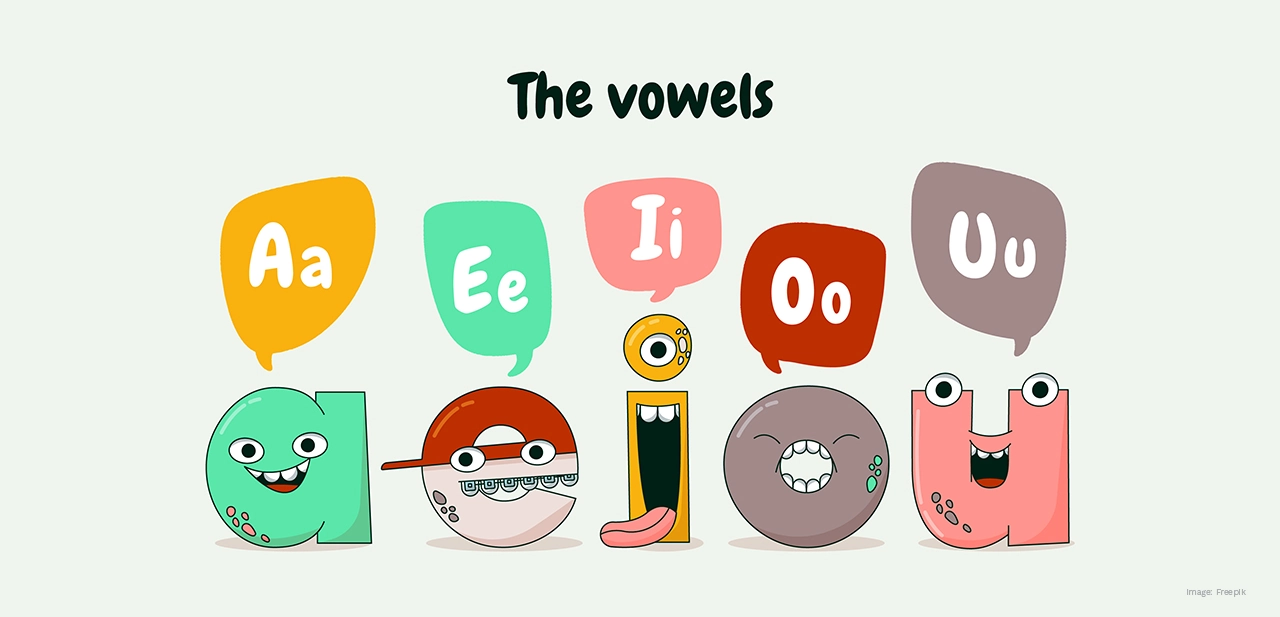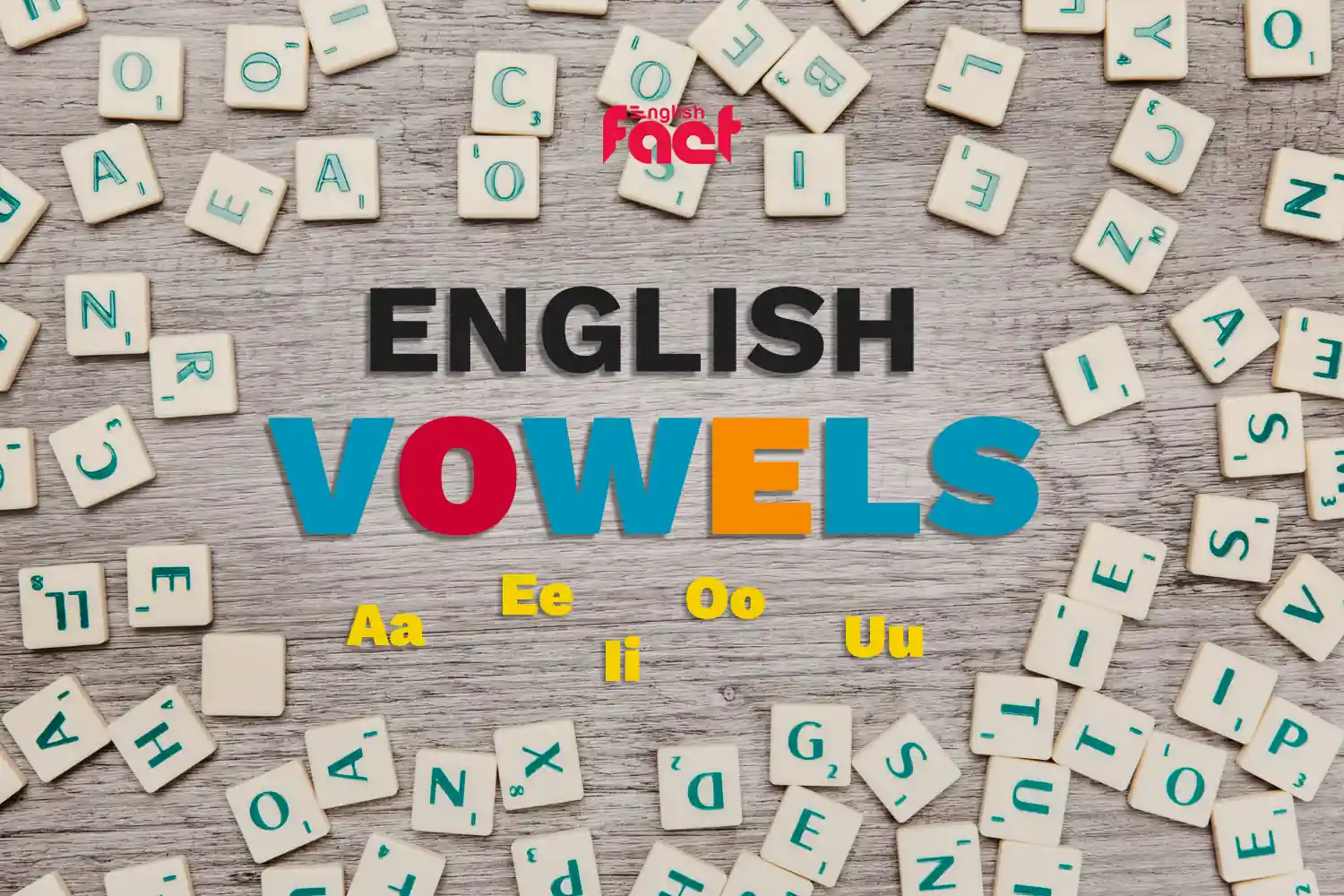Learning English is an exciting journey, and one of the key steps to sounding natural is to master English vowels. Vowels are the heart of English pronunciation, giving words their unique sounds. Whether you’re a beginner or looking to refine your skills, this guide offers English vowels exercises that are easy to follow and fun to practice. By focusing on vowel sounds, you’ll speak clearer and more confidently in no time.

Why Vowels Matter in English
Vowels are the sounds that bring words to life. They’re the open, flowing sounds you make without closing your mouth, unlike consonants, which involve stopping the airflow. Getting vowel sounds right is crucial because even a small mistake can change a word’s meaning. For example, saying “ship” instead of “sheep” can confuse listeners. This article will help you master English vowels by breaking down the basics and providing practical English vowels exercises to improve your pronunciation.
Ready to brush up on your grammar? Get a handle on the correct usage of ‘be’ verbs with this guide.
What Are Vowels?
Let’s start with the basics. In English, the vowel letters are A, E, I, O, U, and sometimes Y. However, English has many more vowel sounds than letters, which can be confusing. For instance, the ‘a’ in “cat” sounds different from the ‘a’ in “cake,” and the vowel sound in “blue” is the same as in “through,” despite different spellings. To master English vowels, we’ll focus on the sounds, not just the letters.
The International Phonetic Alphabet (IPA) helps represent these sounds, but don’t worry—you don’t need to learn complex symbols. We’ll use everyday words to guide you through English vowels that make pronunciation clear and approachable.
Types of English Vowels
English vowels fall into two main categories: monophthongs (single, pure vowel sounds) and diphthongs (gliding vowel sounds). Understanding these types is the first step to mastering English pronunciation.
Monophthongs (Pure Vowels)
Monophthongs are steady vowel sounds where your mouth stays in one position. They can be short or long.
1. Short Vowels: These are quick, sharp sounds. Examples include:
‘a’ in “cat” (/æ/)
‘e’ in “bed” (/ɛ/)
‘i’ in “sit” (/ɪ/)
‘o’ in “hot” (/ɒ/)
‘u’ in “cup” (/ʌ/)
2. Long Vowels: These are held longer and often sound like the vowel’s name. Examples include:
‘a’ in “cake” (/eɪ/)
‘e’ in “see” (/iː/)
‘i’ in “bike” (/aɪ/)
‘o’ in “go” (/oʊ/)
‘u’ in “blue” (/uː/)
Diphthongs (Gliding Vowels)
Diphthongs combine two vowel sounds in one syllable, with your mouth moving from one position to another. Examples include:
- ‘oi’ in “boy” (/ɔɪ/)
- ‘ou’ in “house” (/aʊ/)
- ‘ai’ in “time” (/aɪ/)
To master English vowels, you’ll practice both monophthongs and diphthongs through targeted English vowels exercises.
Exercises for Short Vowels
Short vowels are often tricky because they’re subtle and can change a word’s meaning if mispronounced. These English vowels exercises will help you get them right.
Exercise 1: The Short ‘A’ Sound as in “Cat” 🐱
The short ‘a’ sound (/æ/) is made with a wide-open mouth and a flat tongue, like saying “ahh” but shorter.
Practice Words: cat, hat, bag, sad, apple, black, map, lamp
Minimal Pair Practice: These pairs differ by one vowel sound, helping you hear and say the difference:
cat vs. cut
hat vs. hot
man vs. men
Tongue Twister: “A fat cat sat on a flat mat.” Say it slowly, then speed up.
New Activity: Word Sorting Game. Write down 10 words (e.g., cat, cut, hat, hot, bag, bug, man, men, sad, sod). Sort them into two columns: short ‘a’ (/æ/) and other vowel sounds. Check your answers by saying each word aloud.
Exercise 2: The Short ‘E’ Sound as in “Red” 🎈
The short ‘e’ sound (/ɛ/) is made with a relaxed mouth and slightly spread lips.
Practice Words: red, bed, pen, ten, egg, friend, bell, desk
Minimal Pair Practice:
bed vs. bad
pen vs. pin
men vs. man
Tongue Twister: “Seven red hens slept in a pen.”
New Activity: Listening Challenge. Find a short English video or song (like a children’s song on YouTube). Listen for words with the short ‘e’ sound and write down five examples. Repeat them aloud to mimic the speaker.
Exercise 3: The Short ‘I’ Sound as in “Sit” 🪑
The short ‘i’ sound (/ɪ/) is quick, with a nearly closed mouth and relaxed lips.
Practice Words: sit, hit, pin, ship, fish, big, lip, kid
Minimal Pair Practice:
sit vs. seat
ship vs. sheep
pin vs. pen
Tongue Twister: “Six thin fish swim in a ditch.”
New Activity: Sentence Creation. Make five sentences using at least one short ‘i’ word in each (e.g., “The big fish swims.”). Say them aloud, focusing on the short ‘i’ sound.
Exercise 4: The Short ‘O’ Sound as in “Hot” 🔥
The short ‘o’ sound (/ɒ/) is made with an open mouth and relaxed, rounded lips.
Practice Words: hot, dog, box, rock, shop, top, clock, frog
Minimal Pair Practice:
hot vs. hat
lock vs. luck
not vs. nut
Tongue Twister: “A fox fled from danger in a fog.”
New Activity: Rhyming Game. List five words that rhyme with “hot” (e.g., pot, lot, spot, dot, got). Say them aloud, emphasizing the short ‘o’ sound.
Exercise 5: The Short ‘U’ Sound as in “Cup” ☕
The short ‘u’ sound (/ʌ/) is made with a slightly open mouth and relaxed lips, centered in the mouth.
Practice Words: cup, sun, fun, run, bus, duck, luck, mud
Minimal Pair Practice:
cup vs. cap
sun vs. son
luck vs. lock
Tongue Twister: “A duck runs under a sunny truck.”
New Activity: Fill-in-the-Blank. Create sentences with a missing short ‘u’ word (e.g., “The ___ shines brightly.”). Fill in with words like “sun” or “fun” and practice saying them.
Exercises for Long Vowels
Long vowels are held longer and often sound like the vowel’s name. These English vowels exercises will help you pronounce them naturally.
Exercise 6: The Long ‘A’ Sound as in “Cake” 🍰
The long ‘a’ sound (/eɪ/) is a diphthong, gliding from ‘e’ to ‘i’.
Practice Words: cake, name, late, day, play, rain, say, train
Minimal Pair Practice:
late vs. let
name vs. nam (short for “name” in informal contexts)
plane vs. plan
Tongue Twister: “A gray train stays on the main lane.”
New Activity: Storytelling. Create a short story using five long ‘a’ words (e.g., “One day, I ate cake on a train.”). Read it aloud, focusing on the long ‘a’ sound.
Exercise 7: The Long ‘E’ Sound as in “See” 👀
The long ‘e’ sound (/iː/) is pure, with spread lips like a smile and a high tongue.
Practice Words: see, tree, feet, meet, green, she, free, key
Minimal Pair Practice:
see vs. sit
sheep vs. ship
feel vs. fill
Tongue Twister: “Three free trees bloom by the sea.”
New Activity: Partner Practice. With a friend, take turns saying long ‘e’ words. Correct each other’s pronunciation gently.
Exercise 8: The Long ‘I’ Sound as in “Bike” 🚲
The long ‘i’ sound (/aɪ/) glides from ‘a’ to ‘i’.
Practice Words: bike, time, my, fly, light, night, fine, high
Minimal Pair Practice:
time vs. tin
bite vs. bit
life vs. lift
Tongue Twister: “I ride my bike at night with a light.”
New Activity: Word Hunt. Find five long ‘i’ words in a book or article. Say them aloud and note their spelling patterns (e.g., “i-e” in “bike” or “igh” in “high”).
Struggling to read a clock in English? This guide will walk you through everything you need to know.
Exercise 9: The Long ‘O’ Sound as in “Go” 🚶
The long ‘o’ sound (/oʊ/) glides from ‘o’ to ‘u’.
Practice Words: go, home, no, boat, road, show, know, slow
Minimal Pair Practice:
go vs. got
hope vs. hop
note vs. not
Tongue Twister: “Go slow on the long road home.”
New Activity: Dialogue Practice. Create a short dialogue using long ‘o’ words (e.g., “Do you know the road?” “No, go slow.”). Practice it with a partner or aloud.
Exercise 10: The Long ‘U’ Sound as in “Blue” 🔵
The long ‘u’ sound (/uː/) is pure, with tightly rounded lips and a high, back tongue.
Practice Words: blue, shoe, new, food, moon, school, true, juice
Minimal Pair Practice:
pool vs. pull
fool vs. full
mood vs. mud
Tongue Twister: “Blue shoes bloom on the moon.”
New Activity: Song Practice. Sing a simple song like “Twinkle, Twinkle, Little Star,” focusing on long ‘u’ sounds (e.g., “you” in the lyrics). Emphasize the rounded lip shape.
Exercises for Diphthongs
Diphthongs require smooth gliding between two vowel sounds. These English vowels exercises will help you master the movement.
Exercise 11: The ‘Oi’ Sound as in “Boy” 👦
The ‘oi’ sound (/ɔɪ/) glides from ‘o’ to ‘i’.
Practice Words: boy, toy, coin, voice, oil, join, point, noise
Practice Sentences:
“The boy played with a noisy toy.”
“I found a coin in the soil.”
New Activity: Picture Game. Draw or find pictures of ‘oi’ words (e.g., a boy, a coin). Label each picture and say the word aloud, focusing on the glide.
Exercise 12: The ‘Ou’ Sound as in “House” 🏠
The ‘ou’ sound (/aʊ/) glides from ‘a’ to ‘u’.
Practice Words: house, mouth, brown, now, town, loud, cloud, down
Practice Sentences:
“The brown cow is loud in the town.”
“Don’t shout in the house now.”
New Activity: Minimal Pair Sentences. Create sentences with minimal pairs (e.g., “The cow is loud” vs. “The cat is bad”). Say them aloud to hear the ‘ou’ vs. other vowel sounds.
Expanding your vocabulary as well? Discover easy ways to discuss your family in English.

Additional Tips to Master English Vowels
To truly master English vowels, incorporate these habits into your routine:
- Listen and Imitate: Listen to native speakers via podcasts, movies, or online dictionaries with audio (e.g., Merriam-Webster). Try shadowing: repeat what you hear immediately to train your ear and mouth.
- Use a Mirror: Watch your mouth shape in a mirror. Are your lips rounded for ‘o’ or spread for ‘e’? This visual feedback helps refine your pronunciation.
- Record and Compare: Record yourself saying practice words or sentences. Compare your recording to a native speaker’s to spot differences.
- Practice Daily: Spend 10-15 minutes daily on English vowels exercises. Consistency builds muscle memory for pronunciation.
- Be Patient: New sounds take time to perfect. Celebrate small improvements as you work to master English vowels.

Take Your Pronunciation Further
You’re well on your way to mastering English vowels! These English vowels exercises provide a strong foundation, but practice makes perfect. To deepen your skills, not just the basic English vowels, consider checking our website for more beginner-friendly courses, designed for learners like you. You’ll get:
- In-Depth Lessons: Exciting one-to-one online classes with our EnglishFact teachers.
- Interactive Quizzes: Fun tests to track your progress.
- Guided Exercises: Advanced English vowels exercises with expert guidance.
- Personalized Feedback: Real-time feedback and advice from our certified teachers.
- Community Support: Excellent support from your online teachers to help you boost your confidence in learning.
Start today and master English vowels with EnglishFact and you will have a structured, supportive environment.
Conclusion
By practicing these English vowels exercises, you’re building the skills to speak English clearly and confidently. From short vowels like “cat” to diphthongs like “boy,” each exercise helps you fine-tune your pronunciation. Keep practicing, stay curious, and soon you’ll master English vowels.
Talk to us on WhatsApp or sign up and start today, and let your voice shine!





4 Responses
Thank you for sharing such a well-structured and easy-to-digest post. It’s not always easy to find content that strikes the right balance between informative and engaging, but this piece really delivered. I appreciated how each section built on the last without overwhelming the reader. Even though I’ve come across similar topics before, the way you presented the information here made it more approachable. I’ll definitely be returning to this as a reference point. It’s the kind of post that’s genuinely helpful no matter your level of experience with the subject. Looking forward to reading more of your work—keep it up!
Nice post. I learn something totally new and challenging on websites
I truly appreciate your technique of writing a blog. I added it to my bookmark site list and will
I truly appreciate your technique of writing a blog. I added it to my bookmark site list and will